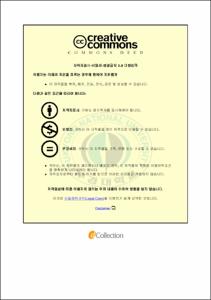한반도 풍수기의 정의 및 발생 특성
- Alternative Title
- The Definition of the Water Abundant Season in Korea and its Occurrence Characteristics
- Abstract
- This study defines the Water Abundant Season (WAS hereafter) that represents the season when water is relatively abundant than other seasons, and investigates common characteristics of WAS in whole South Korea and each station (60 stations), using Available Water Resources Index (AWRI; Byun and Lee, 2002, unit: ㎜) that is the accumulated value of the daily precipitation for 365 days with time dependent function.
Then the WAS is defined quantitatively as the duration that has bigger value of AWRI than the criterion and lasts for more than 75 days. The criterion of WAS is defined by the median value of a daily AWRI for 30 years for each station. The biggest and the smallest value of the criteria of AWRI are shown in Seongsan (270.72 ㎜) and Uiseong (135.88 ㎜), respectively. With this definition, we got very valuable data as followings.
The WAS in South Korea as a whole begins on the 2nd July, ends on the 22nd December, and has the duration of 174 days on average. In each station, the earliest onset date of the WAS is the 15th June at Seogwipo and the latest one is the 25th July at Sokcho on average, and the difference between these two is 44 days, that is not small. And the earliest end date is 3rd December at Tongyeong and the latest is the 17th January of the following year in Uljin on average. The difference between these two is 47 days.
The region with the shortest duration is Yoesu (164 days) and with the longest duration is Uljin (208 days) on average. The beginning date of WAS of whole South Korea is getting earlier with the trend of 3.1 days/decade, the end date is becoming later with the trend of 2.3 days/decade and the duration is increasing with the trend of 5.4 days/decade.
By comparing with the Changma (the rainy season), it was found that the onset date of WAS be very similar to the onset date of Changma, that it be more useful than Changma to show the seasonal condition on water resources, and that the Changma in qualitative concept be changed to the WAS in quantitative concept.
Key words: Water Abundant Season (WAS), Available Water Resources Index, the Changma
- Issued Date
- 2013
- Awarded Date
- 2013. 2
- Type
- Dissertation
- Publisher
- 부경대학교
- Alternative Author(s)
- Park, So-Ra
- Affiliation
- 부경대학교 대학원
- Department
- 대학원 지구환경시스템과학부환경대기과학전공
- Advisor
- 변희룡
- Table Of Contents
- Contents i
List of Figures ii
List of Tables iv
Abstract v
1. Introduction 1
2. Data 7
3. Quantitative Definition of Water Abundant Season 9
3.1 WAS in South Korea 9
3.2 WAS in each station 12
4. Characteristics of Water Abundant Season 14
4.1 The onset and the end date of WAS 14
4.2 The Duration of WAS 17
4.3 Annual Variation of WAS 25
4.4 Comparison with Changma season 29
5. Summary and Conclusions 32
REFERENCES 34
- Degree
- Master
- Appears in Collections:
- 대학원 > 지구환경시스템과학부-환경대기과학전공
- Files in This Item:
-
-
Download
 한반도 풍수기의 정의 및 발생 특성.pdf
기타 데이터 / 2.26 MB / Adobe PDF
한반도 풍수기의 정의 및 발생 특성.pdf
기타 데이터 / 2.26 MB / Adobe PDF
-
Items in Repository are protected by copyright, with all rights reserved, unless otherwise indicated.